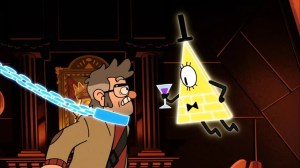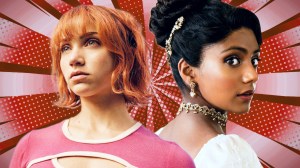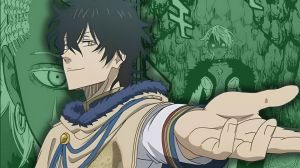With a cast list announced and the first images released, it is already clear where some of the biggest differences between an upcoming DC animated movie and its comic book roots will be coming from.
Videos by ComicBook.com
When The Death of Superman — part one of a two-part mega-movie detailing the Man of Steel’s death at the hands of Doomsday and triumphant return — debuts later this year from Warner Bros. Animation, it will be the second attempt at animating the story as a DC Universe feature film.
This time around, fans were promised at the time of its announcement, the story would be a much more faithful adaptation of the comics on which it was based — and that is self-evidently true from the title of the second film, The Reign of the Supermen! In the comics, after Superman’s death, he was briefly replaced by a quartet of self-styled Supermen vying to be recognized as the real deal. Ultimately, an unspeakable tragedy committed by one of them set the stage for years of DC Universe stories to come.

That first adaptation was incredibly loose, though, and so being “much more true” to the comics does not mean a wholly faithful adaptation. Liberties were bound to be taken, and the initial casting news and first stills from the film have already given fans a peek inside of what the movie’s priorities will be.
“The Death of Superman” is the culmination of a half-dozen years of post-Crisis on Infinite Earths storytelling, and one of the most compelling elements of the saga is just how many long-running plot threads came to a conclusion during the tale (and its follow-ups).
A quick rundown of the key differences can be found below…
Cyborg in the Justice League
Cyborg was never a member of the Justice League until 2011’s The New 52 reboot, when he was added as a way of showing the shifting demographics of the DC Universe and a focus on youth.
Prior to 2011, Cyborg had mostly been a member of the Teen Titans or Titans teams, and at the time of “The Death of Superman,” he was largel off the board (although in a popular poster for the death’s follow-up “Funeral For a Friend,” Cyborg can be seen hanging out with Metamorpho, Red Star, and other Titans).
The inclusion of Cyborg in the Justice League here is no surprise: even fairly stand-alone series in the DC Animated canon tend to follow a loose continuity, and the post-Flashpoint comics status quo that includes a Cyborg on which Cyborg was a founding member has been in use since Justice League: The Flashpoint Paradox reset the timeline of the animated films.
The Justice League’s lineup

This one obviously connects back to the Cyborg issue just mentioned but it is far from limited to that.
The lineup of the Justice League at the time was kind of important to “The Death of Superman.” There was often a sense among readers that if the classic League, with all its heavy hitters and Batman making the battle plan, had squared off against the monster, then Doomsday would never have stood a chance.
Instead, Doomsday tore through the remnants of the beloved Justice League International team assembled under writers Keith Giffen and J.M. DeMatteis.
A team of second-stringers seemingly nearing the end of what DC considered to be their usefulness, the lineup was decimated by the battle. Fire and Booster Gold lost their powers; Blue Beetle was beaten so badly that he went into a coma and remained there for quite some time; Guy Gardner had his head beaten through the pavement; Ice was hospitalized halfway through the fight.
Not only did it deflect the obvious criticisms that a Superman slugfest would have (“where was the Justice League?” and “how did the Justice League lose?”), the story also effectively established the magnitude of Doomsday’s threat. Tearing through the League like tissue paper made Superman’s last stand all the more epic…and it is unlikely that scenario can be recreated with a League that includes Batman, Wonder Woman, and Green Lantern.
…And another thing…
Green Lantern’s light
Last one about the Justice League, we promise.
Nathan Fillion here reprises his role as Hal Jordan, the pre-eminent Green Lantern of the DC animated movies, and his inclusion here is puzzling.
The inclusion of Fillion’s Hal Jordan in Superman/Doomsday, the original story that retold a retooled version of “The Death of Superman,” would have been fairly unremarkable…but to have Hal appear in this story when Reign of the Supermen! is coming next, and Hank Henshaw will apparently appear here…well, it’s a surprise.
In the comics, Hal was away on Green Lantern Corps business, doing a massive space battle, at the time of Doomsday’s rampage and the events that followed. He was spotted in the funeral briefly, but for the most part Hal’s absence was key to something that happened in Reign of the Supermen! and changed the course of the Green Lantern monthly title for years to come:
Hank Henshaw, the Cyborg Superman, destroyed Hal’s hometown of Coast City, killing millions and driving Hal insane.
The internal logic of a villain who appears in Coast City and hovers over it for a while before destroying it does not really hold up if Green Lantern is on Earth, so one way or another it seems that the presence of Hal Jordan and Hank Henshaw in the same story together will necessitate some significant changes to the source material.
Lex Luthor

One of the plots that had been running for years at this point in the comics? Lex Luthor had been found out as a criminal, and had died of radiation poisoning after the Kryptonite ring he had been wearing to keep Superman at bay turned out to have long-term impact on humans, too.
Luthor, being Luthor, killed two birds with one stone. Faking his own death, he had a young, healthy body grown for himself in a tank — and they saved Luthor’s brain.
The version of Lex Luthor who was appearing in the Superman comics at the time of “The Death of Superman” had a long, curly mane of red hair and a beard, and evoked Richard Branson more than the Donald Trump model which had influenced “businessman Lex” in the ’80s and early ’90s.
That version was young, healthy, and presented himself as a man of the people. He ultimately even dated Supergirl (who was also not the Supergirl you’re thinking of, but that’s another story entirely) briefly.
…And here, he’s gone.
Superman’s costume
Superman’s costume here is a slight modification from the version Warner Bros. Animation has been using in recent Justice League animated movies, although not much of one.
In an image released of Superman with Lois, you can see that Superman’s costume looks materially the same as the New 52-inspired costume seen in other recent films, with the exception of a belt that has gold highlights and a yellow pentagonal buckle, rather than the all-red version he has been sporting.
The yellow is more in line with his current comics look, and the metallic “wire” belt looks a bit more like Henry Cavill’s Man of Steel look than it does The New 52’s version, but otherwise it remains a post-2011 take on the costume, which of course was red-trunks-and-tights classic in 1992.
Superman’s cape

Again, the cape is technically part of the costume, but there is a reason for breaking it out.
The first image shared by Warner Bros.’s Gary Miereanu, the publicist who handles the DC animated movies, is a fairly faithful recreation of the cover of Superman #75: Superman’s cape , tattered and fluttering against a backdrop of Metropolis buildings, a distant crowd looking on mournfully.
The image is so iconic that it has been recreated and riffed upon too many times to count. Just since Rebirth, the image of Superman’s torn cape has been featured in numerous flashbacks to the death and return story, and on two covers: an issue of Deathstroke in which Superman squared off with the mercenary, and on an issue of Brian Michael Bendis’s upcoming The Man of Steel miniseries.
Making a change to that iconic image, especially one that fundamentally changes the sources of “light” in the image, makes for a very different image. Whereas on the comics’ cover, the dark skies and mostly-empty buildings provided no light, making the bright yellow “S” shield at the center of the image the first thing to draw the eye, the animated version features buidings which are lit up and a version of the cape with a black logo and a darker shade of red, washing it out somewhat.
Lois Lane

Another iconic image from the comics is the final, three-page splash of Superman’s body slumping to the ground after Lois lets him go and wails into the sky.
At the close of his battle with Doomsday, Lois (covering the battle for the Daily Planet) had run to the side of her injured fiance and cradled the bleeding Superman as he spoke his final words. After he expired, she exploded.
And in that image, seen above, you will notice the reddish-brown hair that differentiated Lois Lane’s look from that of her pre-Crisis on Infinite Earths counterpart for almost 20 years.
The red/brown hair Lois sported during the post-Crisis, pre-Infinite Crisis era is one of only a handful of things from the “Death of Superman” era that still appears verboten in the comics. While references to most of the previously-retconned elements have been restored to the characters’ history, Lois’s hair color, the creation of Conner Kent, and a few other plot points from the era that ran from 1986 until 2005 are mostly discarded, ignored, or changed when the era comes up. One such example is Lois’s black hair on the cover of the “Nineties variant” of Action Comics #1000 by “The Death of Superman” artist Dan Jurgens.
An image of Lois and Clark, released along with the casting notes, reveals a black-haired Lois Lane will appear in the movie.









